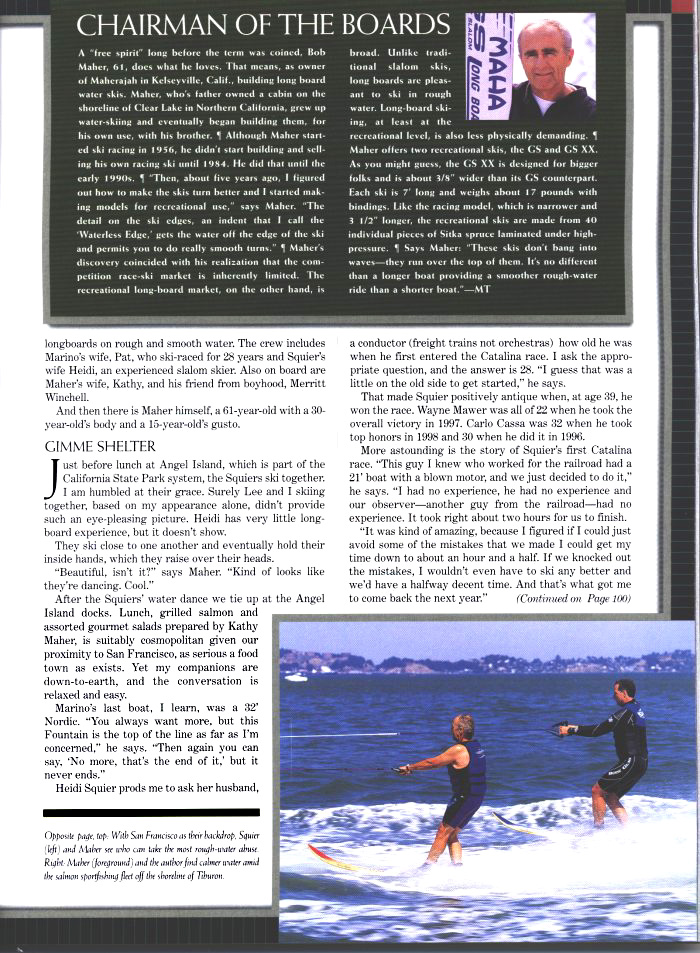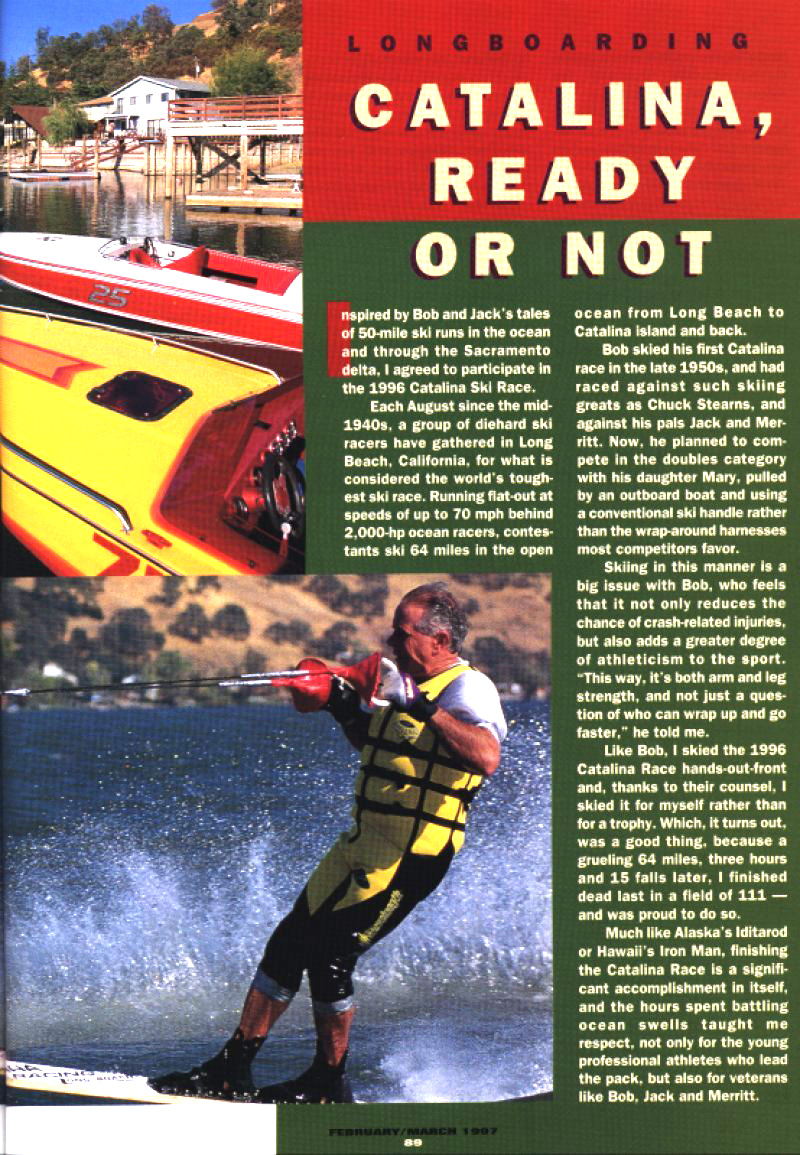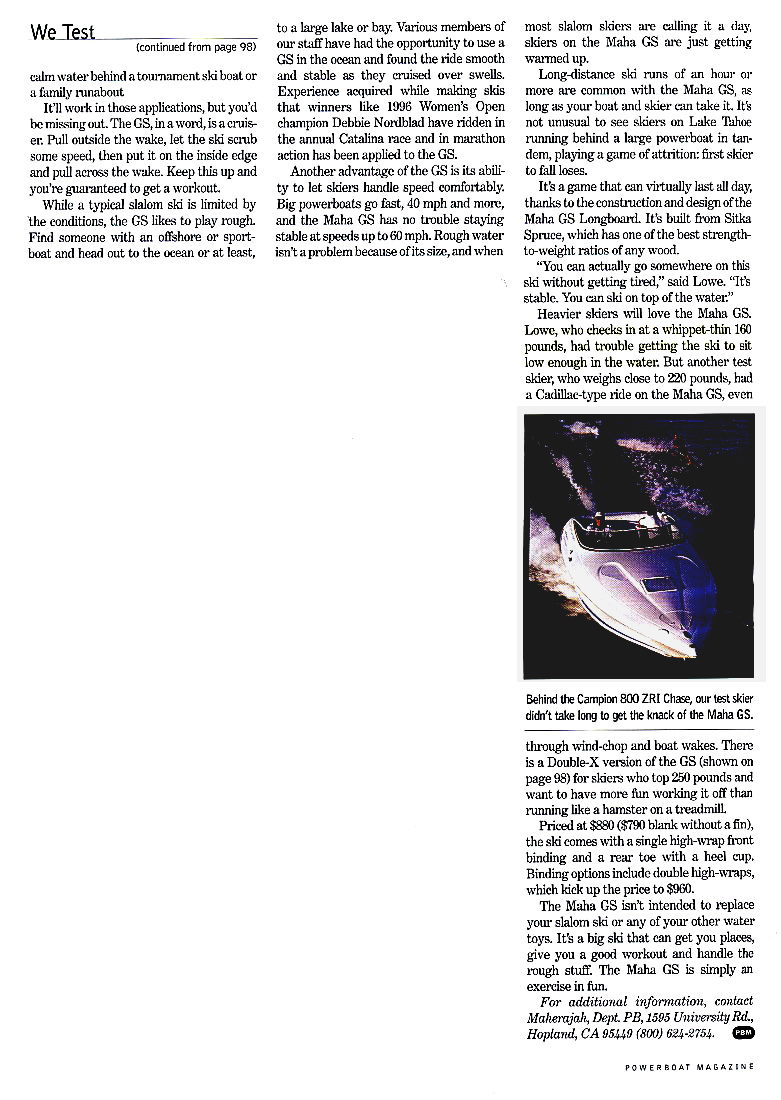Water Skiing Research, Summer 2007
Text by John Runciman
Photos by Martin Schwalbe
Original Article

Getting ready for a run. The author with instrumented wireless helmet and Maherajah Fastback ski.
Water skiing is a sport that approximately 10 million North Americans participate in annually. Since the first skiers took to the water in 1922 it has developed into a multimillion dollar international sport.
Looking at the current technology of water skiing equipment, it isn’t hard to trace its roots. Ralph Samuelson successfully skied on Lake Pepin in Lake City, MN in 1922. He was the first recorded person to water ski. His skis consisted of two pine boards with leather bindings. From this modest beginning came the old style flat bottomed skis that were standard for decades. The 1960’s were a time of many changes and water skiing was no exception. Affordable high performance boats became readily available, fueling the sport. With this increased power and speed came the demand for skis with improved performance. Manufacturers rose to the challenge, developing the features commonly associated with today’s best slalom skis including: high wrap bindings, concave bottoms, drop through fins and beveled edges. One company in particular was to become well known for its innovative ski designs. Maherajah Water Skis began producing skis in the early 1950’s and was the source of many of the currently employed design features associated with the best skis. Their pioneering work on ski design lead to a series of national and world championship ski titles in the 1970s’s and later.

One of our volunteer test subjects getting comfortable with the equipment
Today with our aging population, there are a large number of individuals who have been active in the sport for years and in some cases decades. Statistics bear this out with the participation demographics showing an average age around 30 with an average participation period of 12 years. With increasing age typically comes increased body mass, decreased overall fitness levels and decreased free time available for participating in the sport. All of these characteristics tend to exacerbate the physical demands the sport places on the participant.
This project was initiated to kick off our research program examining water skiing biomechanics and to specifically evaluate a new ski design being marketed to older skiers by Maherajah Skis. This testing was to be the first scientific water ski testing of its kind anywhere. Our hypothesis going into the testing was that the unique design elements found in the Maherajah Fastback ski would significantly reduce the physical demands of the sport while not sacrificing overall performance.
The Fastback ski shares many of the design features of other high end slalom water skis but differs most noticeably by its wider tail and longer recommended length. For more complete information on the ski please see the Maherajah Water Ski web site.

Another test subject making a successful run. This subject reached speeds of over 70 km per hr (42 miles per hour) when cutting.
In the summer of 2007 we put a group of 5 skiers through a series of tests with both typical slalom skis and a Maherajah Fastback ski. We instrumented the skiers and boat to measure skier velocity and direction, boat velocity and direction and rope load.
Results showed that the new ski reduced rope loads on average by approximately 20%. Reduced the work of deep water starting on a single ski by more than half and for some skiers and allowed them to water start on a single ski with nearly identical rope loads and effort as they achieved on two skis. While these numbers are impressive, we also found that the ski’s on-the-water dynamic performance wasn’t deficient either. In a follow-up survey all the skiers reported that they found the Fastback less “aggressive” on the water when compared to the smaller slalom skis, but our measured data showed that the Fastback accelerated well in turns and reached speeds equivalent to those achieved on the slalom skis. In a majority of our skiers, they actually achieved higher cutting speeds on the Fastback than on the small skis.
An article covering this study in more detail is currently in preparation.

![]() Made in the U.S.A. bob@maherajah.com Web design by 916 Designs
Made in the U.S.A. bob@maherajah.com Web design by 916 Designs






















































































